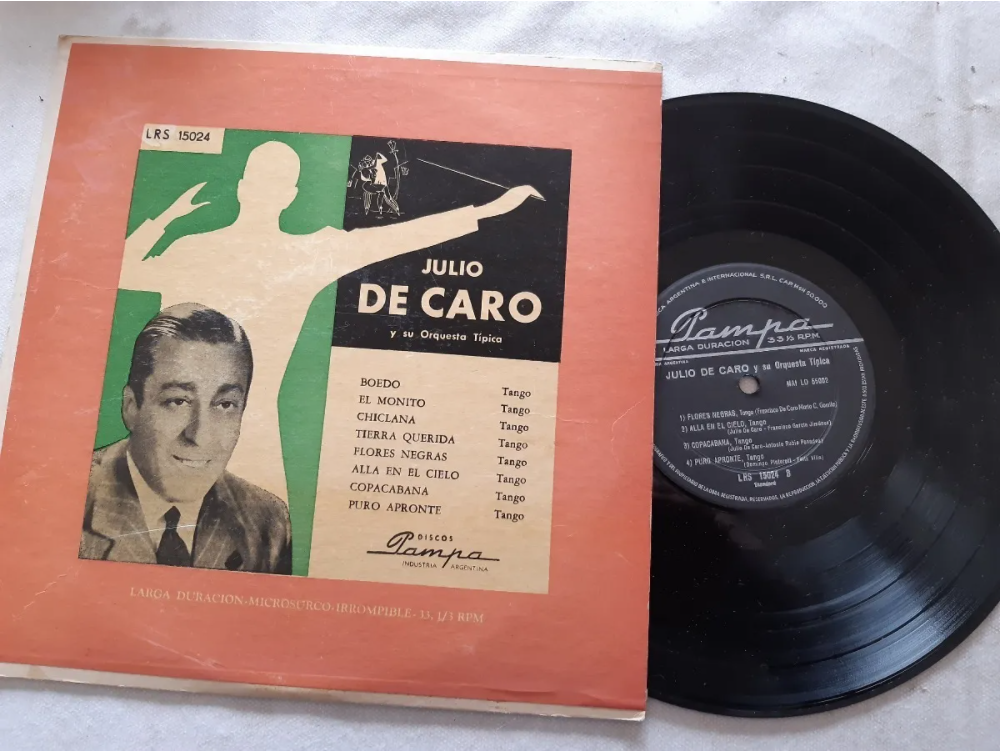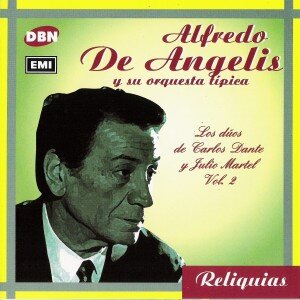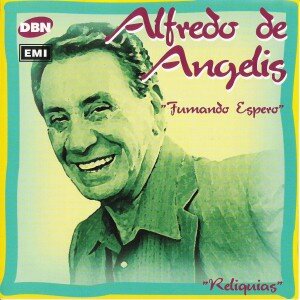5a) Julio de Caro in the Post-78rpm Era
From a historical point of view, no other tango musician could compare with the dazzling achievements of Sexteto Julio De Caro, which successfully brought tango music from the crumbling port and suburban soil to the shining, steady wooden floors of salons and concert halls. He is the tango version of Duke Ellington, the instrumental incarnation of Carlos Gardel, with whom he unlocked the glorious stage of tango art during the Guardia Nueva era (1920-1935).
After completing his last recording in 1944 at Víctor, De Caro retired from the music recording business until Pampa came knocking at the maestro’s door in 1949, offering an opportunity to preserve his artistry using the latest recording technology of the time. Consequently, we have one of the most valuable tango music legacies of the 1920s available at an acceptable quality standard.
Must-haves (4 discs):
DBN Tangos de Rompe y Raja (DBN RR) and EM From Argentina to the World (EM FATW) together complete De Caro’s whole instrumental output except for only two tracks. They are very sweet and friendly to ears as being the genesis and prototype of Pugliese’s creativity and innovation. You need a deep listen with respect, before his magical trade-mark “yeites,” which had driven people mad during the “modern times” of 1920/30s, would appear and enchant you.
CTA-750/751 offers the resolution to the missing tracks, which are mostly vocal.
The List:
Instrumental 1949-53
Vocals 1949-53
5b) Alfredo de Angelis in Post-78rpm Era (until 1964)
Alfredo de Angelis, the leader of “La Orquesta de Familia,” is undoubtedly a cherished artist in Odeón’s lineup. This is distinctly reflected in his existing album catalog: his extensive DBN Reliquias series has compiled his quasi-complete recordings from the 1940s to the early 1960s until Godoy and Mancini parted ways with him. Surprisingly, there are hardly any choices for alternative versions except for this series. While not overly optimistic about its sales statistics, I wholeheartedly respect EMI (as a counter-example to the sheer market-driven Víctor) for retaining its artistic conscience from a collector’s standpoint.
In comparison to most of his peers, who frequently shuttled between Buenos Aires and Montevideo, De Angelis had a broader view of the global market and traveled much more (though not comparable with Caló and Pugliese), including Colombia. After a successful trip to Bogotá in 1963, De Angelis shortly signed with a small local music brand, Fuentes Discos, for 24 songs printed on two separate LPs. As for CDs, Fuentes Discos selectively chose 16 from this entire batch.
Must-haves (20 discs)
Here comes the huge DBN Reliquias collection of Alfredo de Angelis. Keep in mind that these 16 albums are only the ones with post-1949 tacks. They are by no means faultless transfers and you just don’t have better choices.
EU-19011 Archivo Odeon, Dos maestros, dos estilos - Osvaldo Pugliese | Alfredo De Angelis
Excellent instrumental transfers of Alfredo, which makes a version comparison list with the Reliquias series worthy.
EM En Tiempo de Tango (EM ETT)
An album featuring his post-1960 recordings and an eccentric track of Hernando's Hideaway.
EU-19016 Archivo Odeon, Pampas y Cielo
Amazing transfers presenting tracks that were forgotten by the Reliquias series. Must-have.
EM Memorias (EM M)
Late recordings including some beautiful songs of Alfredo Cuello. Together with EM ETT, these two are the only albums you need for late De Angelis - unless you are interested in that artificial Gardel-De Angelis audio stunt.
Could-haves
EU-19010 Orquesta Tipicas
Three lovely songs starring Roberto Mancini. Mi Malacara y Yo is an absolute hit. The album is also valuable and most of its tracks are exclusives.
EM From Argentina To The World (FATW)
This one, along with Greatest Tangos y Milongas (FATW M) and Greatest Tangos (FATW T) from the same series, each offers one valuable track.
DF 10045 - Aqui esta El Tango
Excessive use of noise reduction completely ruined the music. A perfect example of a Midas touch that reversely turns gold into trash. Oh of course, it’s their own master tape and they can play whatever they want with it. What a tragedy.
Este Es El Tango Porteño 10CDs (EETP)
Instrumental 1950-1964 (Odeón, Fuentes)
Carlos Dante 1949-1957
Oscar Larroca 1951-1958
Julio Martel 1949-50, Juan Carlos Godoy 1958-1964
Roberto Florio, Lalo Martel, Roberto Mancini, Alberto Cuello 1958-1968
Duos
Milonga y Vals 1949-1964












































